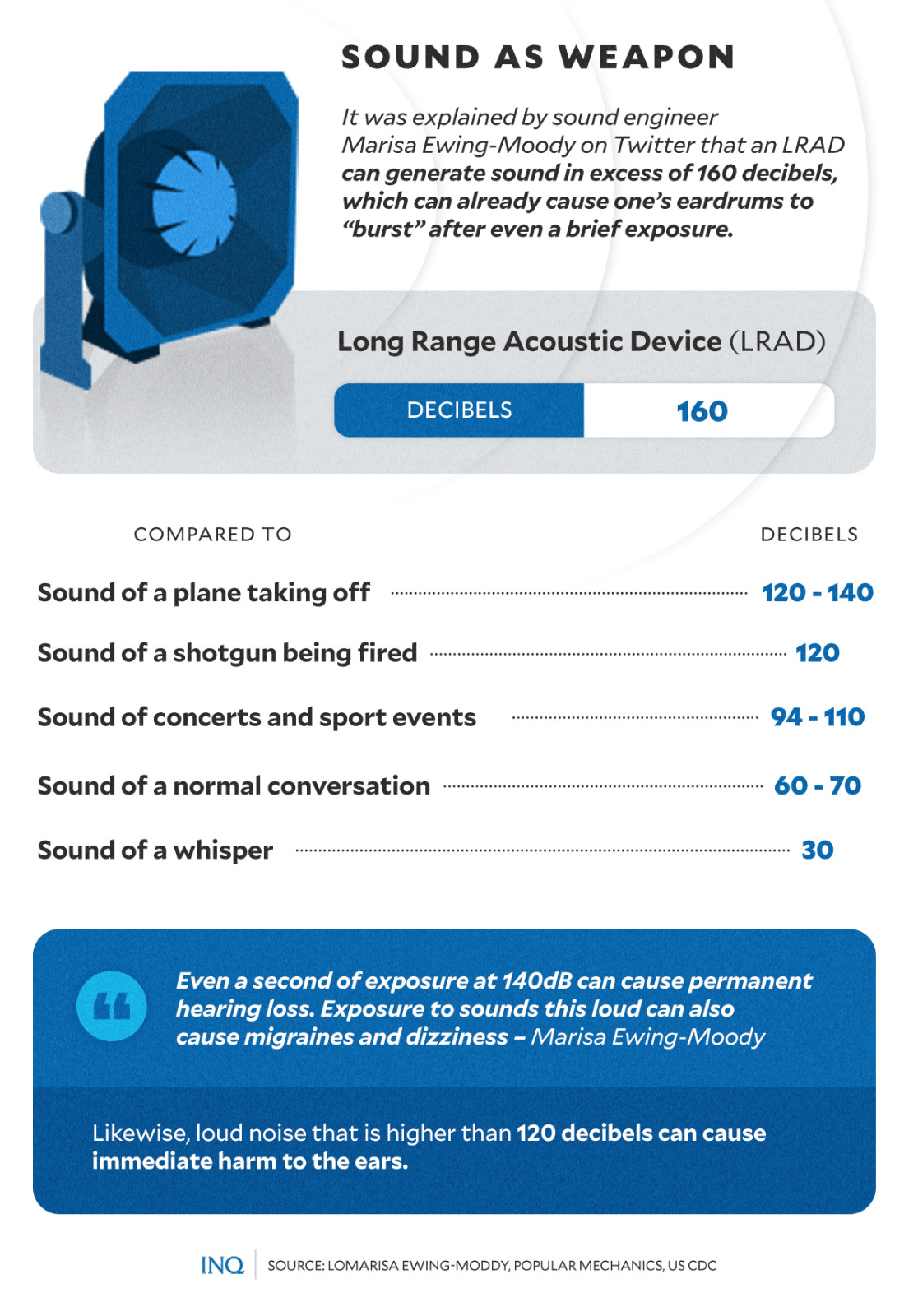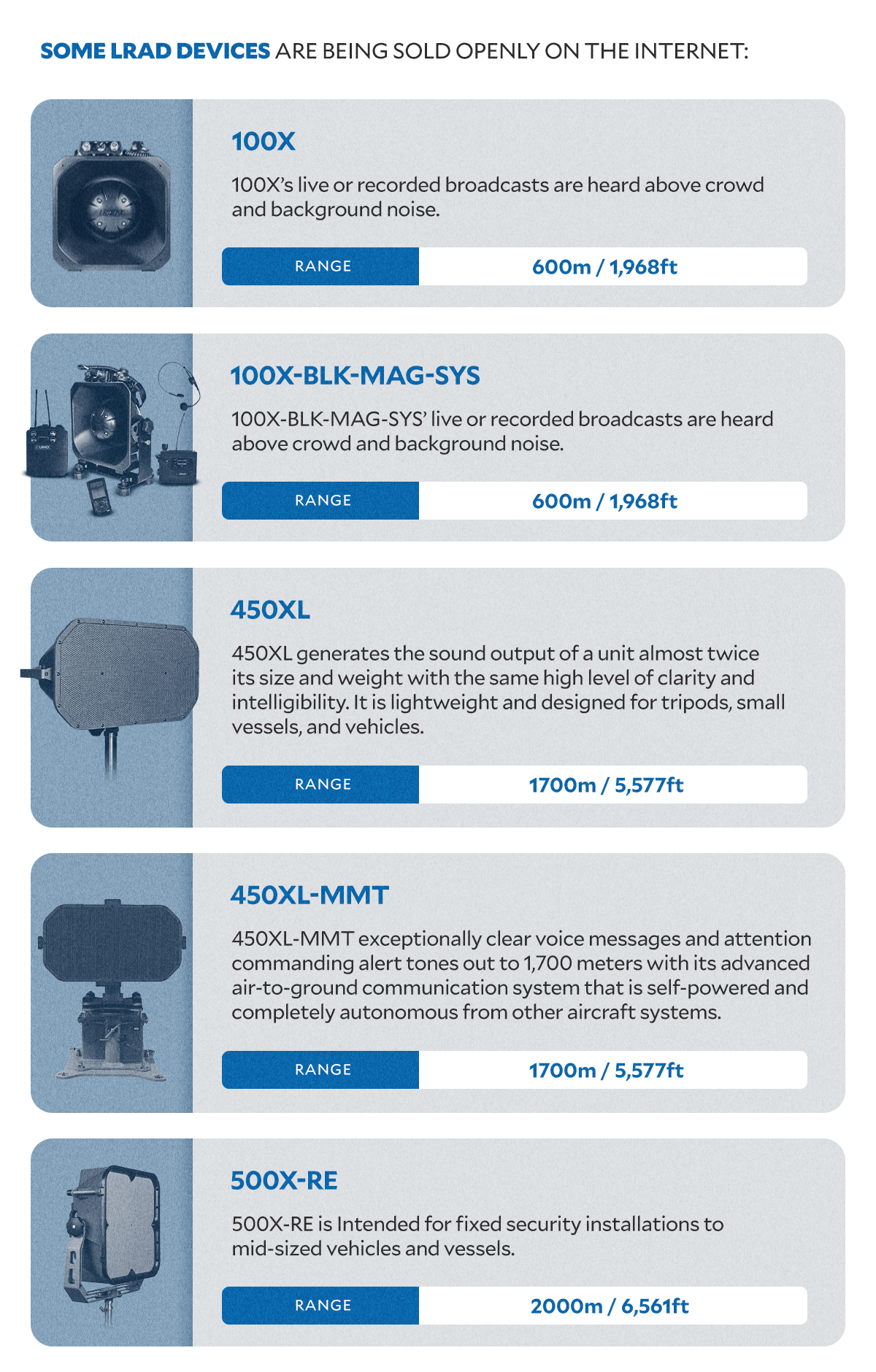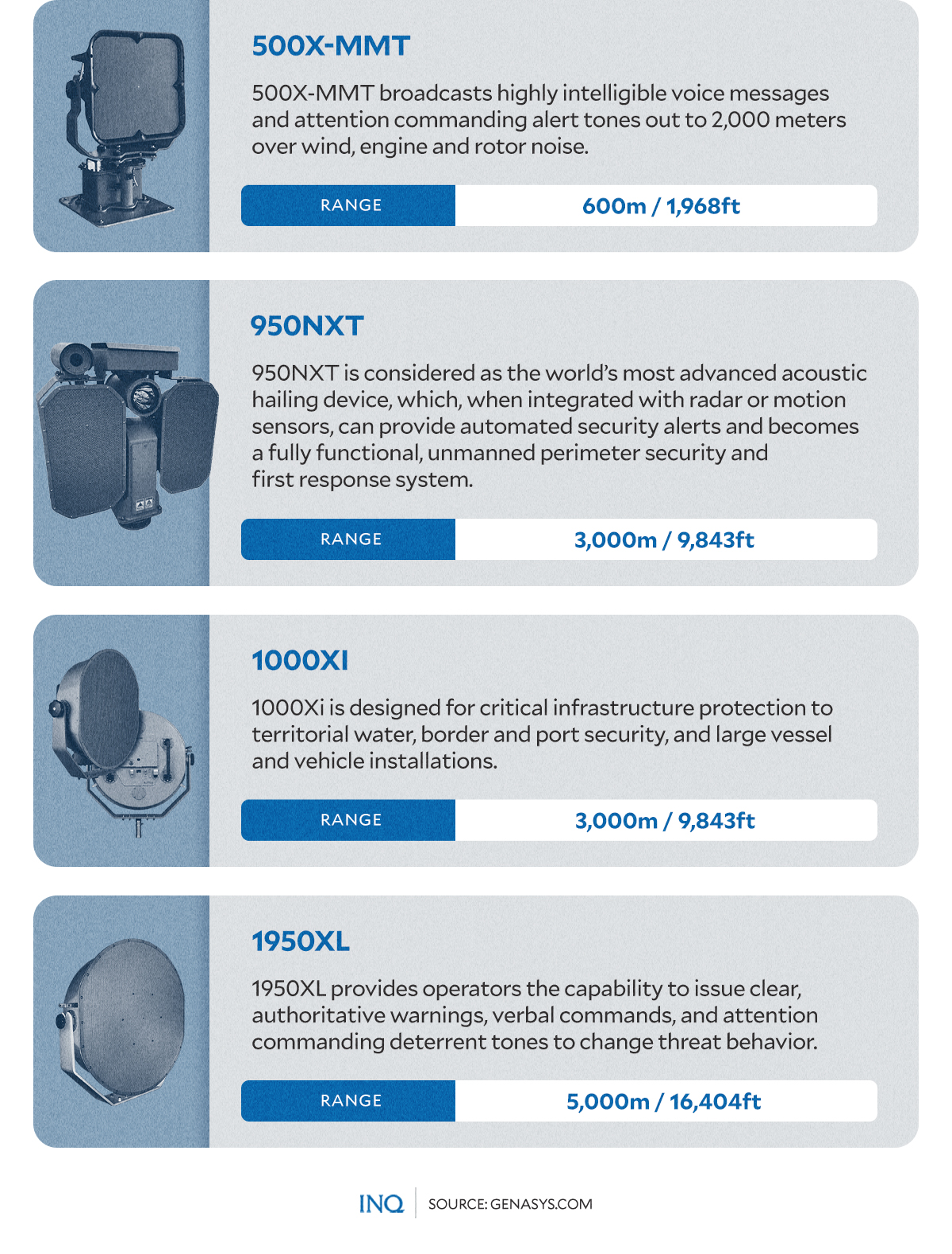China’s use of sound as weapon in WPS aggression brings LRAD into focus
MANILA, Philippines—The use of sound as a defensive or offensive weapon has been around for some time but its emergence as a tool of China to stake its baseless claim to owning nearly the entire West Philippine Sea (WPS) is raising questions about the technology behind Long Range Acoustic Devices, or LRAD.
Late last year, China’s aggression in WPS took an interesting turn when its militia vessels used LRADs against vessels of the Philippines’ Bureau of Fisheries and Aquatic Resources (BFAR).
According to Dr. Chester Cabalza, a security and defense analyst, “the intensity of China’s gray zone tactics in the WPS is evolving and getting sophisticated with the introduction of weapons like the military-grade laser […] down to water cannon attack.”
READ: AFP calls for restraint after Chinese coast guard’s provocative laser attack
“Now, China has included LRADs,” he told INQUIRER.net.
READ: BFAR vessels come under China water cannon attack
While not exclusive to China, the Philippines’ National Task Force for the WPS said that militia vessels attacked those of BFAR with what is understood to be LRADs, causing temporary but severe discomfort and temporarily incapacitating some Filipino crewmen, who were on a civilian mission to Bajo de Masinloc, an area inside Philippine exclusive economic zone (EEZ).
Sound weapon
In an article by Berens et al, “Long Range Acoustic Devices (LRAD) and Public Safety,” published by Acentech, LRAD was defined as a kind of acoustic hailing device that can generate levels of sound way higher than those produced by loudspeakers or megaphones.
According to sound engineer Marisa Ewing-Moody on Twitter (now X) in June 2020, LRADs can generate sound in excess of 160 decibels (dB), which is enough to make eardrums “burst”, or explode, even after brief exposure. “Even a second of exposure [to] 140 dB can cause permanent hearing loss,” she said.
Berens et al said that in short distances, LRAD signals are loud enough to cause ear irritation among people on their path as these emit focused beams of sound like how flashlights work on light. This was what makes LRAD distinctive, the article said.
To better understand the power of sound generated by LRADs, Ewing-Moody explained in an article in Popular Mechanics that the sound of a plane taking off is 120 to 140 decibel. There have been reports previously of planes flying at supersonic speed producing sound that cracks or breaks window glasses.
According to Ewing-Moody, the level of sound of a shotgun being fired is typically 120 dB. The sound level of concerts and sporting events is between 120 dB to 140 dB, she said. The sound level of a whisper is 30 dB, according to her.
According to the US Centers for Disease Control and Prevention (US CDC), noise louder than 120 dB can already do damage to the ears. “More often, hearing loss can result over time from damage caused by repeated exposure to loud sounds,” it said.
“The louder the sound, the shorter the amount of time it takes for hearing loss to occur,” US CDC said.
“The longer the exposure, the greater the risk for hearing loss (especially when hearing protection is not used or there is not enough time for the ears to rest between exposures),” it said.
Within ‘gray zone’
Ewing-Moody said that LRADs were originally invented as a weapon of war after the USS Cole was attacked by terrorists in 2000. They are now occasionally used as devices to disperse large crowds, like in protests. They can be used for making an announcement or emitting a loud sound.
According to the article “How to Dodge the Sonic Weapon Used by Police” by Lynne Yang of Popular Mechanics, while LRADs vary, especially in size, “every model has the same capabilities”—they act as amplifier, emitting sound across thousands of meters, and releasing a “deterrent tone” so loud in can cause permanent hearing loss.
Cabalza, president and founder of the think tank International Development and Security Cooperation, explained that “the use of various afflictions to body senses are harmful and violent since lights war can cause blindness and itchiness, water war can destroy a vessel […] and the noise war can lead to deafness and hearing loss.”
He said that the degree of danger is probable for disturbance and destruction [as] “it creates a havoc of provocation at sea, which can be construed as weapons.”
Don McLain Gill, a geopolitical analyst, told INQUIRER.net that “technically speaking, LRADs and the use of sonar pulses can be best understood as unconventional strategic provocations through the utilization of dual use technology.” “Commonly, such devices are used for crowd control and communication,” he said.
“However, China’s use of sonar pulses, for instance against Australia recently, was a cause of serious concern given their ability to cause permanent hearing damage,” Gill said.
“Today, China has stepped up the use of dual-use equipment to irresponsibly and belligerently provoke its neighbors in their waters,” he said.
No MDT yet
But Cabalza pointed out that it is premature to invoke the Mutual Defense Treaty between the Philippines and the US based on the use of LRADs and other gray zone tactics being deployed by China like the use of laser target lights and water cannons.
READ: China ship hits PH vessels on humanitarian drive with water cannon in West PH Sea
The treaty’s original construct, he said, was for land or terrestrial and aerial attacks.
Gill shared the opinion, saying “it is likely that the use of such equipment will not trigger the security guaranteed and enshrined under the alliance with the US,” referring to LRADs and other unconventional weapons being used by China.
Looking back, it was in 1951 when representatives of the US and the Philippines signed the MDT, declaring that both would “act to meet the common dangers in accordance with its constitutional processes,” an article by the Center for Strategic International Studies stated.
Written by Adrien Chorn and Monika Michiko Sato, the article stressed that like most conventional defense agreements and standards, “the MDT is not clear about the increasingly common unconventional gray zone threats that skirt the definition of war to avoid prompting a kinetic response.”
Gray zone tactics, which are often used in the realm of asymmetrical or hybrid warfare, are defined as “an effort or series of efforts beyond steady-state deterrence and assurance that attempts to achieve one’s security objectives without resort to direct and sizable use of force.” Chorn and Sato explained.
“They can include a mix of conventional warfare, irregular warfare, and cyber-warfare with other influencing methods […] Through gray zone tactics, potential adversaries can inconspicuously coerce their targets to serve their interests while avoiding the possibility of large-scale conflict,” they said.
READ: Lawmaker condemns China water cannon offensive in West PH Sea
It was explained by Cabalza that new forms of technology seen in cyberattacks and gray zone tactics were non-traditional forms of warfare that the archaic defense agreement between the Philippines and the US did not see coming when the MDT in 1951 was written and approved.
Openly sold
According to the article by Popular Mechanics, American military officials, as a response to the terror attack on USS Cole, asked the LRAD Corporation, now Genasys, for a device with two capabilities—to communicate at a distance with potential threats, and to disperse them with an intolerable alarm-like sound.
Now, LRADs are being sold openly on the internet.
Take the case of the products being sold in the Internet by Genasys.
One is LRAD 1950XL, which, it said, can provide operators the capability to issue clear, authoritative warnings, verbal commands, and attention-commanding deterrent tones to change threat behavior, initiate and scale responses, and enhance response capabilities.
LRAD 1950XL’s sound can reach as far as 5,000 meters.
According to the website Investigate by the Economic Activism Program, different models of the LRAD are being used, too, by the US military, the Federal Bureau of Investigation, Immigration and Customs Enforcement, and Customs and Border Protection.
LRADs are being used, too, by police and military men in Australia, Canada, Columbia, Georgia, Germany, India, Iraq, Israel, Kazakhstan, Morocco, the Netherlands, Oman, Poland, Saudi Arabia, Senegal, Spain, Turkey, Turkmenistan, and the United Kingdom.
As pointed out by Cabalza, since LRAD weapons are lethal to sailors and soldiers, the most recent interpretation for the MDT, which can evolve, was that it can be invoked because of the deliberate attack and the frequency of its use against the Philippine Coast Guard, Philippine Navy, and Filipino fishermen.
For Gill, “more than anything, as China gets a free pass with such irresponsible behavior at sea, this merits a thorough reevaluation by the US Hub and Spokes Network to better address such behavior and to apply more cost on China.”



















